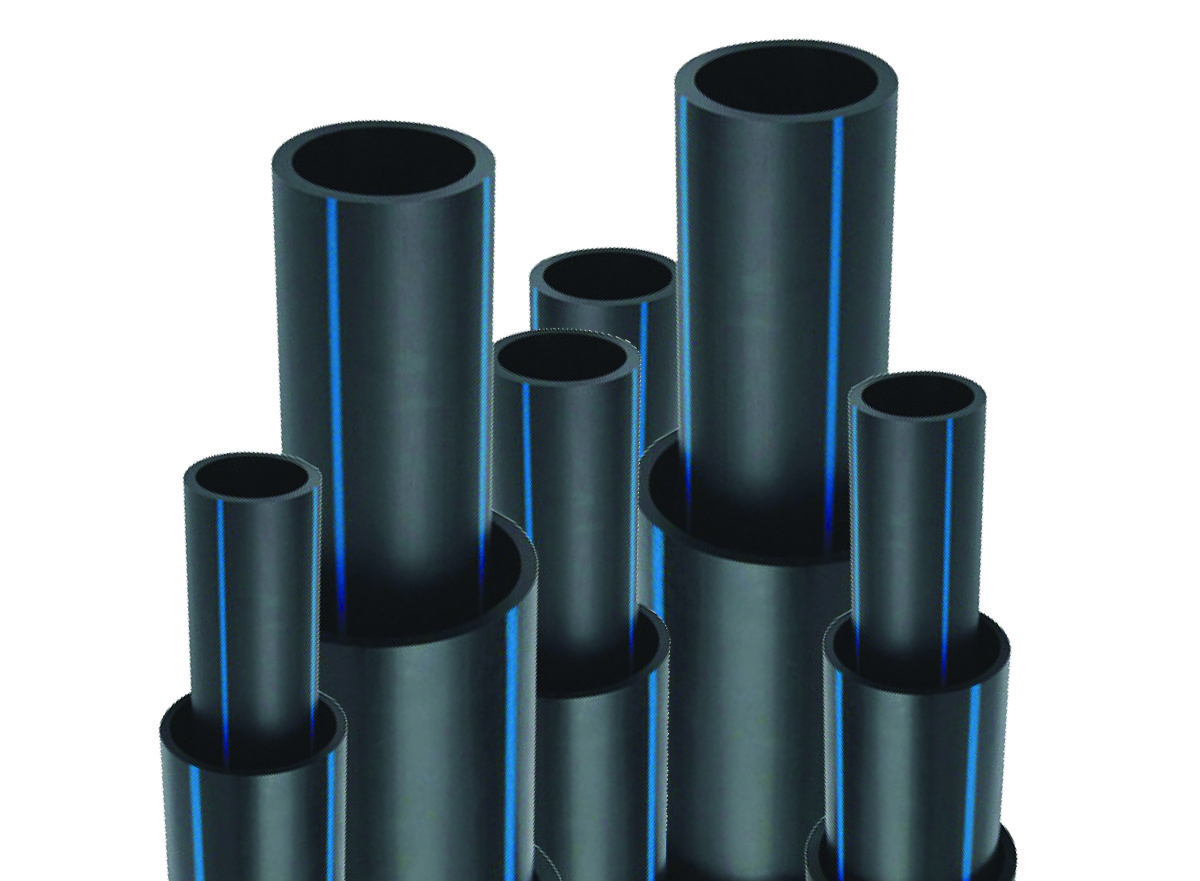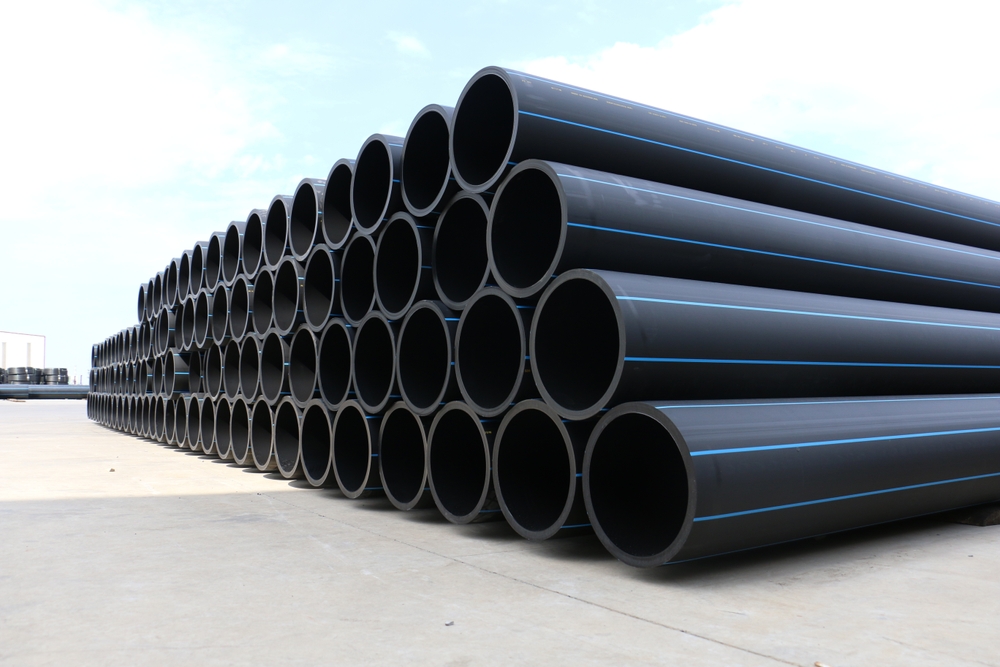American Plastics HDPE Pipe for Oilfield: Trusted by Engineers
Wiki Article
Check Out the Manufacturing Refine Behind High-Quality HDPE Pipe and Its Applications
The production process of high-grade HDPE pipelines is intricate and systematic. It begins with the option of basic materials that boost efficiency. Following this, ethylene undertakes polymerization to develop resin, which is after that formed with extrusion. Quality assurance is paramount, ensuring that the final product meets rigorous criteria. Nonetheless, the trip of HDPE pipelines does not finish with production. Their applications across numerous sectors disclose a wider importance worth taking a look at.Understanding HDPE: Characteristics and Advantages

High-density polyethylene (HDPE) is a versatile polycarbonate understood for its toughness and resistance to various environmental factors. This material exhibits superb tensile stamina, making it appropriate for requiring applications. Its low-density structure adds to a light-weight item, assisting in simplicity of handling and setup. HDPE additionally showcases exceptional resistance to chemicals, which decreases deterioration when exposed to rough substances.
The product's low moisture absorption additionally boosts its longevity, making it suitable for use in pipelines and tank. Furthermore, HDPE is immune to ultraviolet (UV) radiation, making sure that items preserve their integrity also when exposed to sunlight. Additionally, its flexibility permits the production of detailed forms without compromising stamina. The environment-friendly nature of HDPE, often stemmed from recycled materials, contributes to its charm, promoting lasting practices in manufacturing. In general, these residential properties and advantages make HDPE a favored selection for various commercial and consumer applications.
Raw Product Option for HDPE Manufacturing
The option of resources for HDPE production is crucial to confirm the last item meets the wanted specs and high quality standards. High-density polyethylene (HDPE) is largely created from polymerized ethylene, originated from nonrenewable fuel sources such as natural gas or petroleum. The top quality of these feedstocks greatly affects the mechanical and thermal residential or commercial properties of the final HDPE.Additives likewise play a significant function in improving HDPE's performance, including anti-oxidants, UV stabilizers, and colorants, which improve resilience and resistance to environmental aspects. The choice procedure should consider not just the chemical composition of the raw materials yet likewise their handling attributes to assure reliable manufacturing.
Additionally, the sourcing of basic materials ought to focus on sustainability and conformity with ecological policies, as accountable techniques are imperative in today's market. Eventually, careful raw product choice lays the foundation for generating top notch HDPE pipes appropriate for diverse applications.
The Extrusion Process: Shaping HDPE Pipeline
The extrusion procedure plays a crucial duty in shaping HDPE pipelines, starting with careful material preparation techniques that ensure ideal flow and consistency. Equally crucial is the layout of the die, which straight influences the last dimensions and surface high quality of the pipeline. Together, these variables contribute greatly to the effectiveness and high quality of HDPE pipeline manufacturing.Product Preparation Techniques
Reliable manufacturing of HDPE pipelines starts with thorough product prep work methods, especially the extrusion process. Throughout this phase, high-density polyethylene resin is initial dried to eliminate wetness, making sure perfect circulation characteristics. The resin is after that fed into the extruder, where it goes through heating and melting, changing into a viscous state. This home heating procedure is carefully managed to keep the material's honesty and performance. The liquified HDPE is forced via a die, forming it right into a continuous pipe kind. Correct temperature monitoring throughout extrusion is vital, as it directly impacts the material's properties and the end product quality. When formed, the HDPE pipeline is cooled down and cut to defined lengths, prepared for succeeding handling and applications.Die Design Relevance
Accuracy in die design plays a necessary role in the extrusion procedure of HDPE pipes. The die offers as the final shaping device, straight affecting the pipeline's measurements, wall surface thickness, and surface coating. A well-designed die warranties uniform material flow, decreasing flaws such as abnormalities and weak areas. The geometry of the die need to be optimized to accommodate the details properties of HDPE, including its viscosity and thermal habits during extrusion. Additionally, the cooling rate of the product as it travels through the die can significantly impact the pipeline's structural stability. Spending in innovative die modern technology is essential for manufacturers intending to create top quality HDPE pipes that meet market criteria and consumer expectations.Top Quality Control Steps in HDPE Production
Although different elements affect the quality of HDPE pipeline manufacturing, effective quality assurance procedures are crucial to ensure consistency and reliability in the end product. Trick top quality control methods include rigorous material assessment, verifying that the raw polyethylene meets well-known standards for purity and thickness. Throughout the extrusion procedure, parameters such as temperature, pressure, and cooling time are closely monitored to preserve dimensional accuracy and architectural honestyOn top of that, post-production testing is essential; suppliers usually carry out hydrostatic tests to examine the pipeline's toughness and resistance to stress. Visual evaluations for surface defects even more improve quality guarantee. Accreditation from pertinent requirements companies, like ASTM or ISO, offers an added layer of trustworthiness. By applying these complete quality control actions, suppliers can lessen defects, improve performance, and ensure that the HDPE pipelines meet the particular requirements of numerous applications, eventually leading to client contentment and rely on the item.
Applications of HDPE Pipe Across Industries
HDPE pipes are used across various markets due to their durability and flexibility. In water distribution systems, they assure reliable delivery, while in wastewater administration, they give reliable solutions for waste transport. Furthermore, farming watering networks gain from HDPE's resistance to rust and flexibility, making it an ideal selection for modern farming practices.
Water Circulation Solutions
A considerable variety of sectors depend on high-density polyethylene (HDPE) pipes for effective water distribution systems. Understood for their sturdiness and resistance to rust, HDPE pipelines are commonly utilized in metropolitan supply of water networks, farming watering, and commercial applications. Their light-weight nature promotes simple handling and installment, reducing labor costs and time. Additionally, HDPE pipelines can suit different stress levels, making them appropriate for both reduced and high-pressure systems. Pipe Manufacturing Midland TX. The versatility of the product enables seamless combination into existing infrastructure, minimizing the need for substantial excavation. In addition, HDPE's resistance to chemical seeping guarantees that the water delivered continues to be secure and clean, making it an excellent selection for preserving the high quality of safe and clean water throughout various sectorsWastewater Administration Solutions
Reliable water distribution systems likewise pave the means for innovative wastewater monitoring remedies, where high-density polyethylene (HDPE) pipes play a considerable function. Renowned for here their durability and resistance to corrosion, HDPE pipes are ideal for delivering wastewater in numerous setups. Their flexibility permits for simple installment in complex settings, minimizing the need for considerable excavation. In addition, HDPE's smooth indoor surface area reduces friction, boosting circulation prices and effectiveness. These pipelines are likewise immune to chemical leaching, ensuring that contaminants do not jeopardize the surrounding setting. Industries, districts, and therapy facilities increasingly rely on HDPE pipes for their integrity and longevity, making them a preferred choice for modern-day wastewater management systems. This versatility underscores the critical importance of HDPE pipelines throughout many applications.Agricultural Watering Networks
Agricultural watering networks profit significantly from making use of high-density polyethylene (HDPE) pipes, which provide efficient and reliable water shipment to plants. HDPE pipes are lightweight, making them easy to transport and set up, while their adaptability permits for different setups in diverse terrains. These pipelines show excellent resistance to corrosion, chemicals, and UV radiation, making sure durability in severe agricultural atmospheres. In addition, their smooth indoor surface minimizes friction loss, maximizing water circulation and lowering power prices related to pumping. The long life of HDPE pipes, typically going beyond half a century, adds to reduce maintenance and substitute costs. Farmers significantly depend on HDPE pipelines to boost watering performance and promote lasting agricultural practices, inevitably leading to boosted crop yields and source conservation.
Future Trends in HDPE Pipe Modern Technology
As the demand for sustainable and effective framework grows, advancements in HDPE pipe modern technology are positioned to transform numerous sectors. Emerging patterns include the combination of clever modern technologies, such as sensors and IoT abilities, which assist in real-time monitoring of pipeline conditions, reducing maintenance expenses and avoiding leaks. In addition, the growth of innovative manufacturing strategies, such as 3D printing, is making it possible for the manufacturing of facility, customized pipeline designs that accommodate specific job requirements.The focus on recycling and circular economic situation techniques is driving the development of HDPE pipes made from recycled materials, boosting sustainability. Improved jointing methods, such as electro-fusion and mechanical fittings, are likewise enhancing setup effectiveness and integrity. Ultimately, the growing emphasis on environmental laws is pressing suppliers to embrace greener manufacturing processes, ensuring that HDPE pipes not only satisfy market standards however additionally cultivate a more sustainable future for facilities advancement.
Frequently Asked Concerns
How Does HDPE Contrast to Other Plastic Materials?
HDPE exceeds lots of other plastic products concerning toughness, chemical resistance, and adaptability. Its reduced thickness and high tensile strength make it excellent for numerous applications, usually surpassing options in both efficiency and durability.What Are the Environmental Impacts of HDPE Production?
The ecological influences of HDPE manufacturing consist of greenhouse gas emissions, power consumption, and prospective pollution from producing processes. Furthermore, incorrect disposal can result in soil and water contamination, raising worries concerning long-lasting eco-friendly results.Can HDPE Water Lines Be Reused?
Yes, HDPE pipelines can be reused. Several centers approve utilized HDPE for processing, transforming it right into new items. This recycling contributes to sustainability efforts, minimizing plastic waste while preserving sources and power in the manufacturing cycle.What Is the Life Expectancy of HDPE Pipes?

Exactly How Do Temperature Variations Influence HDPE Pipeline Efficiency?
Temperature level variations considerably impact HDPE pipe performance, affecting flexibility and toughness. Heats can bring about softening, while low temperatures may create brittleness, inevitably influencing the pipeline's toughness and suitability for different applications in diverse settings.Report this wiki page